Genre: Action Developer: BitBeamCannon Publisher: Neofid Studios Players: 1 Released: 2025
After playing through Neofid Studios’ previous two games, Demons of Asteborg and Astebros, I jumped at the chance to back their newest project on Kickstarter. It looked great, and it was just the kind of game I was looking for to scratch that action itch. DaemonClaw: Origins of Nnar is a tough bird, but I can honestly say that it’s a damn fine game.
DaemonClaw is a side-scrolling action game about Elrik Eisenfaust, an avenging warrior who protects the rich lands of Nnar from an invasion by Zverkin armies. His main weapon is the DaemonClaw, an enchanted gauntlet that serves as a conduit for his magical power by releasing them as powerful attacks. Elrik isn’t alone on his quest, either. The Genesis version of DaemonClaw features the exclusive character Gareth from Demons of Asteborg, who possesses a different fighting style that brings some variety and replayability. He’s also a bit easier to use than Elrik and has ranged magic. The campaign is the same, but using Gareth first may be a good way to learn the ins and outs of the levels and boss fights.
One of DaemonClaw‘s strong points is indeed the variety in combat. You can parry projectiles, dive in with attacks from up high, launch into a magical uppercut from the ground, or counter mid-air. Then there’s the evasive roll, key to avoiding that damage that can otherwise be just plain unavoidable. All these mechanics are simple enough to learn with basic input combinations, yet their mastery proves essential to surviving encounters that put up a fight… and I do mean a fight. Most enemies wear armor or carry shields that have to be shattered before you can actually harm them, so you’re going to have to think your moves through carefully, even on the easy setting. DaemonClaw can be brutally hard if you don’t know the mechanics. and it has a bit of a learning curve. It’s going to take a bit of practice to get acquainted enough with Elrik’s moveset to get through the game without some struggle, even on the normal difficulty setting. This game isn’t a straight-forward beat-’em-up like Two Crude Dudes or other games of that ilk. The need to adjust tactics keeps the combat interesting in what could otherwise be a standard button-mashing affair. Thankfully, there’s a good tutorial to ease players into the action, encouraging practice ahead of larger challenges. The gameplay reminds me a lot of Ghouls ‘s Ghosts, where the first few runs seem insanely difficult, but once you know the gameplay and enemy patterns, you destroy them without too much trouble.
The same rule applies to the boss battles. Just waltzing in and mashing buttons will get you nowhere, and it can be a bit frustrating at first to just have your ass handed to you by a boss so quickly. Each of these major enemies introduces new weaknesses to uncover, so you have to take the time to learn the patterns. For instance, the giant bird boss at the end of the first stage has a massive shield that blocks direct attacks. You’ll need to find a way to lower the bird’s guard while avoiding his lasers, sword strikes, and dive-bomb attacks. Later bosses maintain this kind of creativity, making each fight feel hard enough to make you want to smash your controller at first but unique and rewarding once you know what to do. I admit I did find myself pointing at the screen and talking all kinds of smack after beating several of them (my wife still doesn’t understand).
The high difficulty level is satisfying to overcome, but it does mask the game’s shortness. At only four levels, DaemonClaw is over pretty quickly once you know how to play it. BitBeamCannon tried to overcome this flaw by adding additional modes that must be unlocked by playing the main game, like Boss Rush, Survival, and Tag Team modes, but they don’t add all that much to the length. In fact, Tag Team only makes things easier because you can now swap between both Elrik and Gareth on the fly, essentially giving you two life bars at a time. Granted, this is an action game, and it’s not supposed to have dozens of hours of playtime, but it does seem like the extra modes are compensating for DaemonClaw’s short length to some degree.
In all, the early difficulty is really my only major complaint. It shouldn’t be that much of an issue for dedicated gamers, but it could turn off some casual fans or newcomers to the genre. As I mentioned, DaemonClaw reminds me a lot of old school arcade titles, and perhaps it’s better to view the game from that perspective. Coin-ops were made to munch quarters, and many were short but extremely difficult. How well that formula works in a home game in 2025 is debatable. Otherwise, DaemonClaw is a top-notch release that I enjoyed quite a bit. The gameplay is very refined and complex, the story is interesting, and the presentation is outstanding. The graphics are colorful, detailed, and animated; and the music by industry legend Allister Brimble was excellent.
DaemonClaw‘s complexity might be challenging for more casual players, but for fans of skill-based, retro-style action games, it delivers a richly developed and demanding addition to the Genesis library. It melds satisfying combat depth, inventive enemy design, and excellent presentation into an experience that honors the best of the 16-bit era while offering some fresh, exciting gameplay (not that Genesis owners have been lacking that lately). I think action fans will definitely want to give this one a try.
SCORE: 8 out of 10

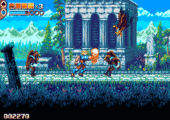
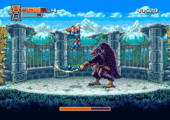
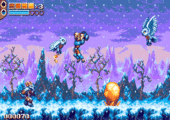
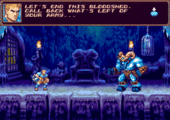
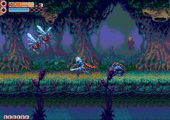
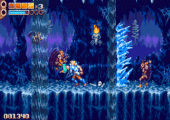
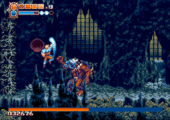
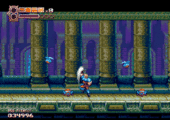
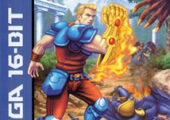
Recent Comments